We conduct Finite Element Analysis (FEA) studies following international standards or your custom protocols—and can even help develop them. Need support for design validation or structural analysis?
We’ve got you covered.
Our team of expert engineers employs cutting-edge FEA simulation tools and techniques to solve complex problems across industries. Whether you’re developing new products or optimizing existing designs, we deliver insights to support product validation, helping you reduce risk, save time, and cut costs.
The figure at the right hand side shows a model of a ceramic ball for hip replacement. The FE analysis was performed to evaluate the stress distribution in this component caused by the conical coupling between the ball and the stem. Often the problem is simplified by applying an internal pressure to the ball or by using displacement boundary conditions for the inside of the ball. A realistic FE analysis can only be done by simultating contact and friction between stem and ball which can be performed in our FE program.
The evaluation of the material strength was done considering failure criteria for brittle material. Small differences in the angle between the conical areas of stem and ball cause great influences in stresses and can be simulated using the contact features of the FE program.The developed procedure can be applied to a variety of modular connections in medical devices such as the conical cup/insert coupling. The exact modeling of the geometries especially for ‚hard/hard‘ contact problems such as ceramic-ceramic is essential.
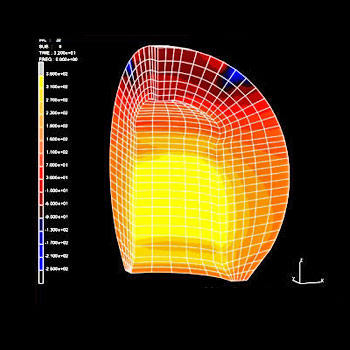
The analysis of coronary stent is carried out to optimize stent designs. On the other hand FE analysis can reduce in-vitro testing for stents. For this problem, the simulation of plastic material behavior has a great significance. In our laboratory experimental and analytical procedures are combined.
In the FE model both the mechanical boundary conditions of dilatation and the in-vivo fatigue loading can be simulated. The dilation of the stent in the FE analysis is additionally shown in a short animation.
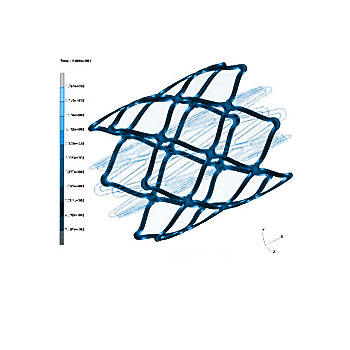
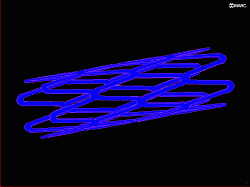
For a variety of endoprosthesic components as well as the stress analysis, the knowledge of contact pressure in wear components is essential. In reality small deviations of the shape have great influence on stress distributions. For the FE analysis the implant geometries have to be modeled as realistically as possible, the contact tolerances in this FE model do not exceed 1/1000mm.
Due to the composition of the FE model by (plane) elements, complex curved contact areas as found in a total knee prosthesis require special „know-how“ in FE modeling.
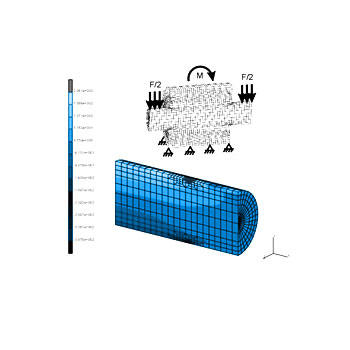
For a variety of endoprosthesic components as well as the stress analysis, the knowledge of contact pressure in wear components is essential. In reality small deviations of the shape have great influence on stress distributions. For the FE analysis the implant geometries have to be modeled as realistically as possible, the contact tolerances in this FE model do not exceed 1/1000mm.
Due to the composition of the FE model by (plane) elements, complex curved contact areas as found in a total knee prosthesis require special „know-how“ in FE modeling.
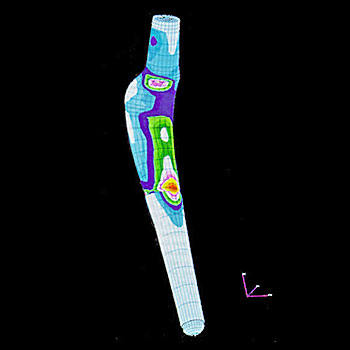
CONTENT
You are currently viewing a placeholder content from Vimeo. To access the actual content, click the button below. Please note that doing so will share data with third-party providers.
More InformationYou are currently viewing a placeholder content from YouTube. To access the actual content, click the button below. Please note that doing so will share data with third-party providers.
More InformationYou need to load content from reCAPTCHA to submit the form. Please note that doing so will share data with third-party providers.
More Information